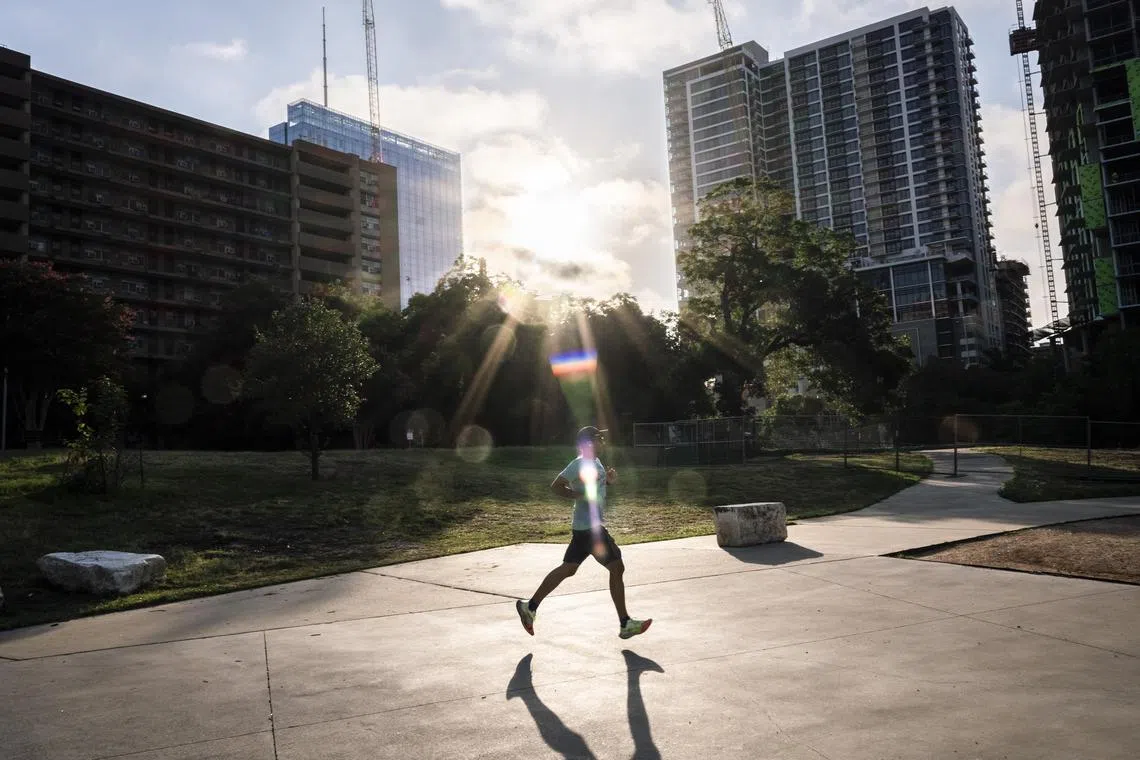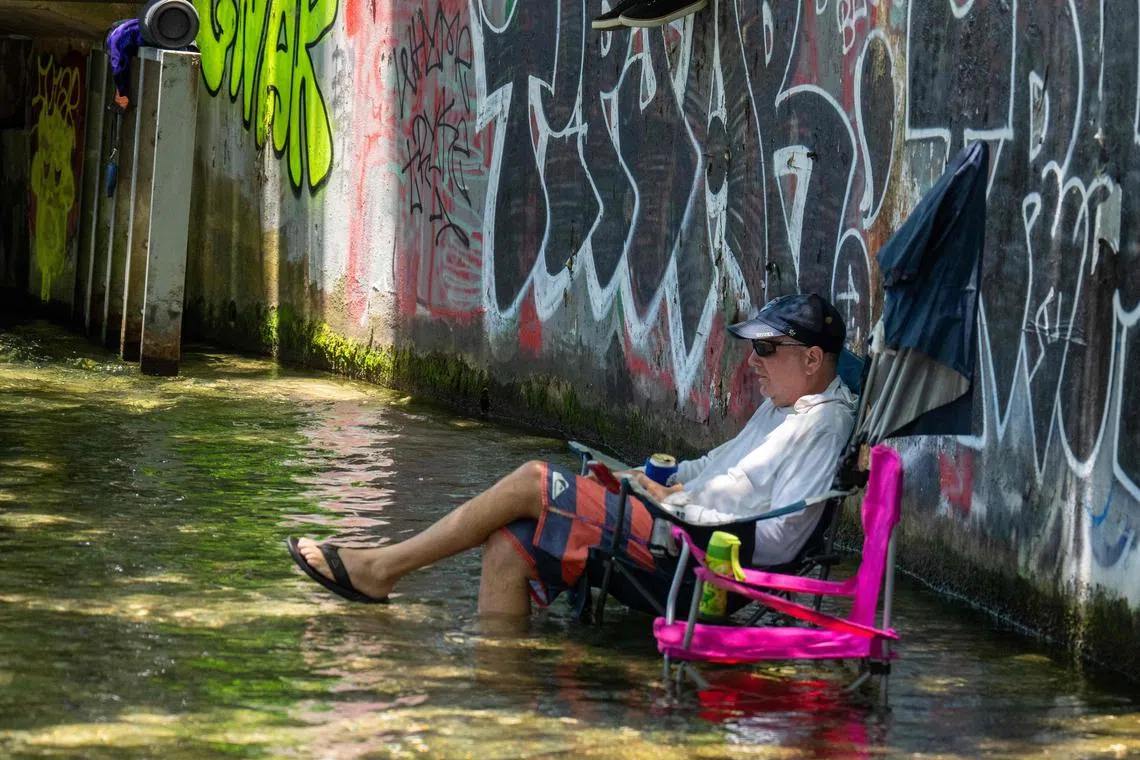Southern US swelters in brutal heatwave
Sign up now: Get ST's newsletters delivered to your inbox

Excessive heat warnings were in place from Arizona all the way to Alabama, with south and central Texas one of the worst hit.
PHOTO: NYTIMES
Follow topic:
HOUSTON, Texas - A dangerous and prolonged heatwave blanketed large parts of the southern United States on Tuesday, buckling highways and forcing people to shelter indoors in what scientists called a climate-change supercharged event.
Excessive heat warnings were in place from Arizona in the south-west, all the way to Alabama in the southeast, with south and central Texas and the Lower Mississippi Valley worst hit, said the National Weather Service (NWS).
Mr Victor Hugo Martinez, a 57-year-old foreman who was leading workers repairing a road in Houston, told AFP: “We can’t keep up with it. It’s too much, we have like 10 or 12 spots like this right now.”
The crew wrapped bandanas around their heads to protect themselves from the blazing heat, with Mr Martinez explaining that they made sure to hydrate and take several breaks to protect their health.
NWS, meanwhile, urged Americans in affected areas to drink water, stay indoors, and check on vulnerable friends and relatives.
Dr Andrew Pershing, a scientist at Climate Central, told AFP that “the really unusual thing about this event is how big it is, and how long it has lasted”.
“There have been places in Texas that have had more than two weeks of over 100 deg F (37.8 deg C), which are just really unusual temperatures for this time of year, even in a region that is used to heat.”
Accumulated historic greenhouse emissions made the extreme weather event at least five times more likely than otherwise, according to preliminary calculations by a team led by Dr Pershing.
The sweltering conditions are expected to expand throughout the south, beginning on Wednesday and continue into the long July 4 holiday weekend.
The extreme heat appears to have already claimed some lives.
Last week, a 66-year-old postal worker in Dallas fainted while delivering mail as the heat index hovered around 46 deg C. He died hours later, the US Postal Service told the media, though the cause of death is still being investigated.
And last Friday, a 14-year-old boy collapsed from exhaustion while hiking at Big Bend National Park in Texas and later died, according to an official statement.
His stepfather left the scene to hike back to their vehicle to find help while the teen’s brother attempted to carry him back to the trailhead. The father was later found dead in a car crash.
Strain on power grid

Construction workers in the middle of the day in the blazing heat, in San Antonio, Texas, on June 27, 2023.
PHOTO: REUTERS
The strain is sure to put the power grid in Texas to the test, as millions of people switch on their air-conditioners to cope, with demand peaking around late afternoon.
Ercot, the state utility operator, has issued a Weather Watch, calling on individuals and institutions to voluntarily save energy to avoid an emergency – but has so far been able to cope, thanks in part to an increasing contribution from solar power in recent years.
Public cooling centres run by local authorities or the Red Cross are available for vulnerable people.
Animals, too, were suffering. The Houston Humane Society said 12 cats and one dog were found dead in an abandoned apartment. The group was able to rescue six cats from the property.
Air-conditioning feedback loop

Residents cool off at Barton Creek on June 27 in Austin, Texas.
PHOTO: AFP
Dr Kristina Dahl, principal climate scientist of the Union of Concerned Scientists, said the widespread use of air-conditioning was itself a climate feedback loop.
“We know that one of the most effective things you can do to prevent heat, illness and death during heat waves is to run the air-conditioning,” she told AFP.
“And yet, if we are not powering that air-conditioning with clean renewable energy sources, we are contributing more carbon emissions to the atmosphere which will further worsen heat, which will necessitate greater air-conditioning use.”
Recent years have seen an explosion in litigation aimed at shifting the financial responsibility of climate disasters towards fossil fuel companies.
Last week, a county in the north-western state of Oregon filed a lawsuit against major fossil fuel companies seeking more than US$51 billion (S$68.8 billion) over the 2021 “Heat Dome”, which blighted Canada and the US.
Mr Richard Wiles, president of the Centre for Climate Integrity, told AFP: “Communities everywhere are now paying the price for the fossil fuel industry’s decades of climate deception and pollution.” AFP

